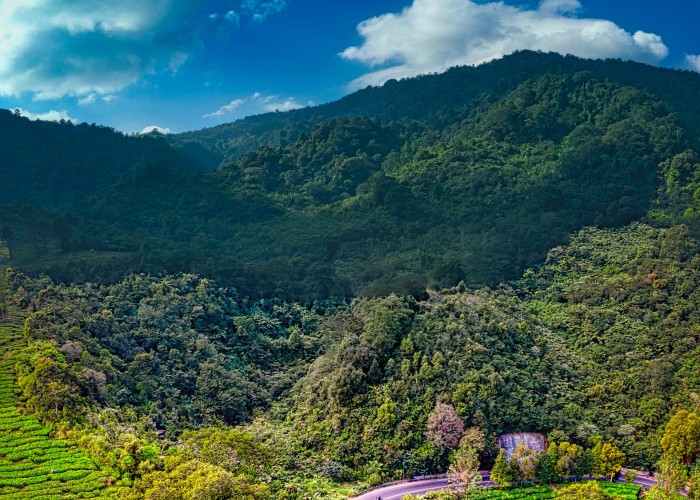The West Highland Way is one of Scotland’s most famous long-distance hiking trails, drawing adventurers from across the globe, including the USA, UK, Australia, and Germany. Known for its stunning landscapes, rugged terrain, and rich cultural history, this trek offers a memorable experience for outdoor enthusiasts. This guide provides everything you need to plan your journey along the West Highland Way, making your trek both safe and enjoyable. West Highland Way Trek, Scotland: Comprehensive Guide.
Overview: What is the West Highland Way?
The West Highland Way is a 96-mile (154-kilometer) trail running from Milngavie, near Glasgow, to Fort William in the Scottish Highlands. Established in 1980, it was Scotland’s first officially designated long-distance route and remains one of the most popular trails in the UK.
The route showcases a variety of landscapes, from rolling lowland hills to dramatic mountain passes, serene lochs, and picturesque villages. Highlights include Loch Lomond, Rannoch Moor, and Ben Nevis—Britain’s highest peak, visible near the trail’s end. It’s famous for its natural beauty, well-maintained paths, and a mix of challenging and moderate sections suitable for most hikers.
Best Time to Visit
- May to September is the prime hiking season. During these months, the weather tends to be milder with longer daylight hours, making it easier and safer to cover daily distances.
- July and August are the warmest months but also the busiest, so expect more hikers and book accommodations in advance.
- Late spring (May and June) and early autumn (September) offer fewer crowds and beautiful natural scenery with blooming flowers or changing foliage.
- Winter and early spring are not ideal due to cold, snow, and shorter daylight hours, which can make some parts dangerous.
How to Reach the West Highland Way
By Air
- Glasgow Airport is the main international gateway and is about 20 minutes from Milngavie by train or car.
- Inverness Airport can be a convenient entry point for those combining the trek with other Scottish adventures.
By Train
- Milngavie station is the official starting point of the trail and is easily accessible by train from Glasgow.
- Fort William, the trail’s endpoint, is well connected by rail from Glasgow and Edinburgh.
By Road
- Both Milngavie and Fort William are accessible by car with available parking options near the trailheads.
- Regular bus services operate along key points on the route for easy access or exit.
Entry Fees and Permits
- The West Highland Way is a public right of way, so there are no entry fees or permits required to hike the trail.
- Fees may apply for accommodation, campsites, or additional guided services if used.
- Conservation donations are appreciated at some visitor centers but not mandatory.
Food Availability and Meal Options
- Along the trail, you’ll find pubs, cafes, and shops in towns like Drymen, Crianlarich, Bridge of Orchy, and Kinlochleven.
- Meal options range from hearty Scottish breakfasts and traditional dishes to packed lunches and snacks.
- Some accommodations provide dinner and breakfast, but options can be limited in remote areas, so carrying some food supplies is recommended.
- Water is generally available from taps in villages and hostels, but carry purification tablets if unsure.
Packing List and Essentials
Clothing
- Waterproof jacket and trousers (weather can be unpredictable)
- Layered clothing to adapt to changing temperatures
- Sturdy hiking boots with good ankle support
- Hat and gloves for cooler mornings or higher elevations
- Comfortable socks and quick-dry base layers
Gear
- Backpack with capacity for day essentials or overnight gear
- Map and compass or GPS device
- Reusable water bottles or hydration system
- Basic first aid kit and blister treatment
- Snacks and lightweight food for longer stretches
- Mobile phone with portable charger
- Trekking poles (optional but helpful on steep or uneven terrain) West Highland Way Trek, Scotland: Comprehensive Guide.
Safety Tips and Local Regulations
- Stay on marked paths to protect fragile environments and avoid getting lost.
- Check weather conditions before and during the trek; Scottish weather can change rapidly.
- Be cautious crossing rivers and slippery rocks, especially after rainfall.
- Carry a whistle and headlamp for emergencies.
- Inform someone about your daily itinerary and expected arrival times.
- Respect wildlife and keep a safe distance from livestock and domestic animals.
- Follow Leave No Trace principles to keep the trail clean for others.
Tips for Beginners or First-Time Visitors
- Break the route into manageable sections based on your fitness level. Most people complete the trek in 6 to 8 days.
- Train with regular hikes before the trip to prepare your body for long distances and uneven terrain.
- Book accommodation in advance, especially during peak season.
- Start early each day to maximize daylight and avoid walking in the dark.
- Pack light but bring essentials for changing weather.
- Familiarize yourself with trail signs and landmarks.
- Consider guided tours or group hikes if you prefer extra support.
Local Customs and Cultural Etiquette
- Scots are friendly and welcoming; a polite greeting and “thank you” go a long way.
- Respect private landowners; most of the trail crosses open access land or public paths, but avoid straying from marked routes.
- When passing through villages, keep noise levels down and respect local privacy.
- Dogs are common on the trail but should be kept under control and away from livestock.
- Support local businesses by purchasing food or souvenirs in towns along the way. West Highland Way Trek, Scotland: Comprehensive Guide.
Frequently Asked Questions (FAQs)
How long does the West Highland Way take?
Typically 6 to 8 days, depending on your pace and daily distance.
What is the difficulty level?
Moderate. The trail includes some steep climbs and rough terrain but is suitable for most hikers with reasonable fitness.
What is the highest point on the trail?
The Devil’s Staircase, about 550 meters (1,804 feet) above sea level.
Are there restrooms along the way?
Yes, public toilets are available in towns and some campsites or hostels.
Is the trail suitable for children?
Yes, but plan shorter days and watch out for steep or rocky sections.
Can I camp on the West Highland Way?
Wild camping is allowed under Scotland’s access laws, but use designated sites where possible to minimize impact.
Is mobile phone coverage reliable?
Coverage is generally good near towns but patchy in remote sections.
Do I need special permits or fees?
No permits or fees are required for hiking the trail.
Conclusion
The West Highland Way is a must-visit trek for anyone looking to experience Scotland’s natural beauty and cultural heritage up close. With its manageable length, well-marked paths, and a variety of landscapes, it caters to both seasoned hikers and beginners eager for a challenge. Proper preparation, respect for the environment, and awareness of local customs will ensure your trek is safe, enjoyable, and memorable. Whether you come from the USA, UK, Australia, Germany, or anywhere else, the West Highland Way offers an unforgettable adventure through the heart of the Scottish Highlands. West Highland Way Trek, Scotland: Comprehensive Guide.






Leave a Reply